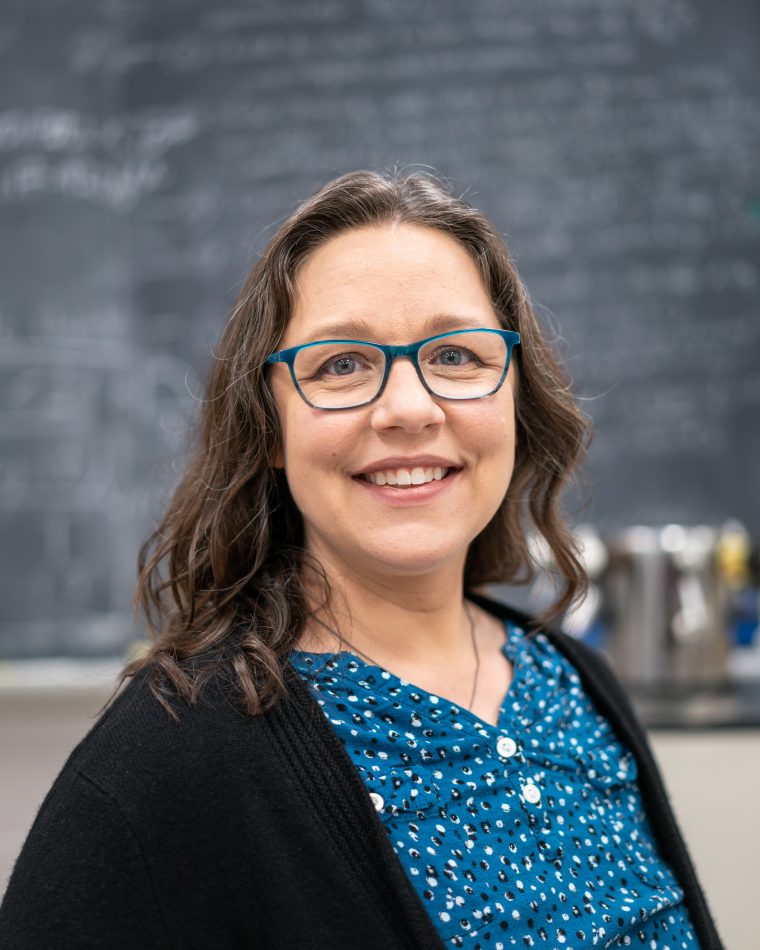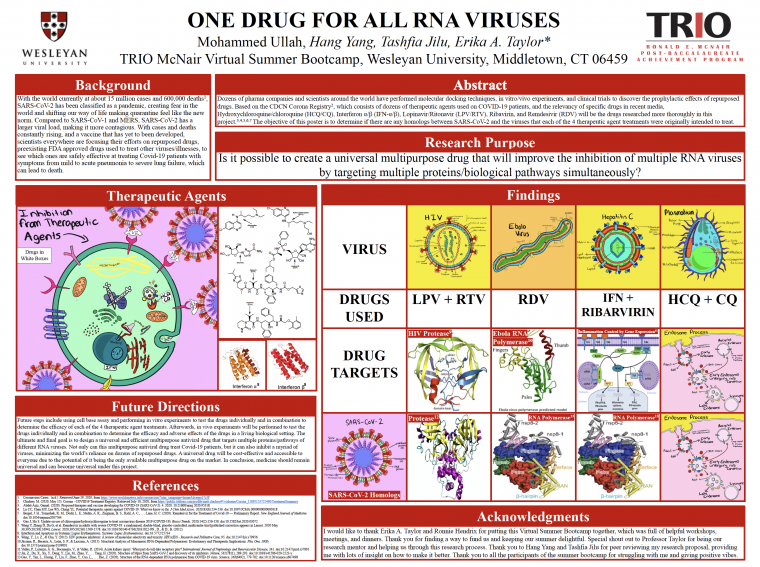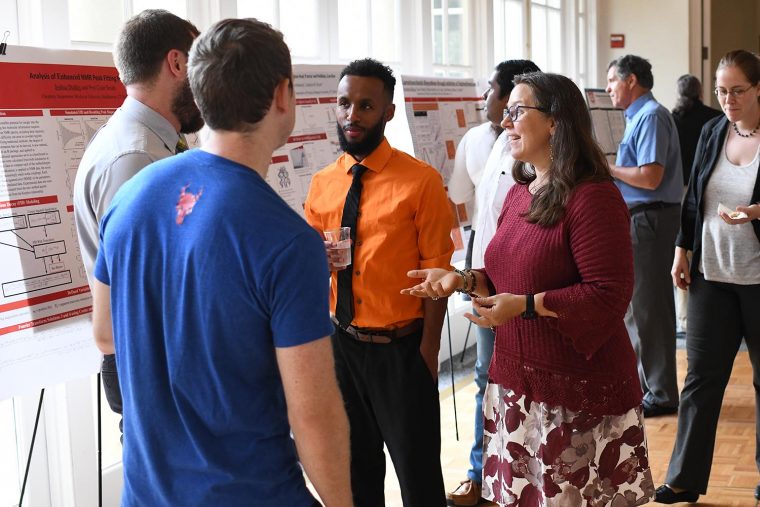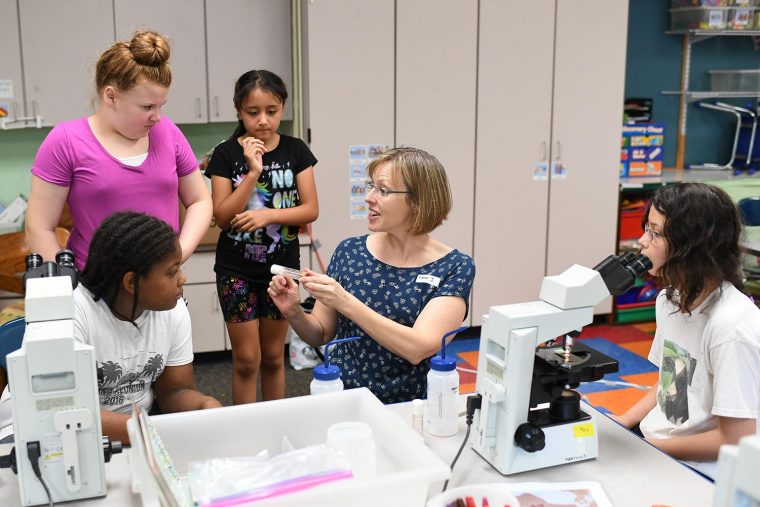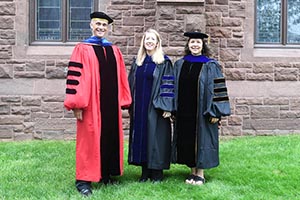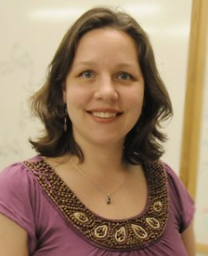Erika Taylor, associate professor of chemistry, recently co-authored three papers and a book chapter related to (1) biomass to biofuel production and (2) development of new therapeutics to treat Gram-negative bacterial infections. Taylor's work investigates problems at the biological chemistry interface and seeks to find applications of her work to the fields of medicine and sustainable energy. Her chapter called “Lignin Enzymology – Recent Efforts to Understand Lignin Monomer Catabolism” in the book Comprehensive Natural Products III: Chemistry and Biology, and her paper “Identifying Metabolic Pathway Intermediates that Modulate Enzyme Activity: A Kinetic Analysis of the DesB Dioxygenase from Sphingobium…
This summer, 12 Wesleyan students who identify as first-generation/low-income learned more about research methods and proposal-writing through the first McNair Bootcamp. Held in conjunction with Wesleyan's Ronald E. McNair Post-Baccalaureate Program and the Wesleyan Mathematics and Science Scholars (WesMaSS) Program, the bootcamp provided a solution for summer research students who were unable to transition their in person research projects into remote research during the COVID-19 pandemic. "You certainly don't want students doing organic chemistry in their kitchens back home," said bootcamp co-founder Erika Taylor, associate professor of chemistry. "Many types of research aren't able to be translated to 'virtual research'…
Joy Cote PhD ’18, Cody Hecht '18, MA'19, and Erika Taylor, associate professor of chemistry, are the co-authors of a study that explores how opposite charges on our substrate and enzyme cause a protein to change shape when the substrate binds. The study, titled "Opposites Attract: Escherichia coli Heptosyltransferase I Conformational Changes Induced by Interactions between the Substrate and Positively Charged Residues," appears in the February 2020 issue of Biochemistry. "If you can imagine how the opposite charges of magnets are attracted toward each other, then you understand the results of this paper," Taylor explained. "The enzyme uses positively-charged amino…
Erika Taylor, associate professor of chemistry, is honored for being among the "Top 35 Women in Higher Education" in the March 20 issue of Diverse. Taylor joined the Wesleyan faculty in 2007 and teaches courses in the areas of organic chemistry, biochemistry, environmental chemistry, and bio-medicinal chemistry, among others. She's also associate professor, environmental studies, and associate professor, integrative sciences, and takes a multidisciplinary approach to investigating problems at the biological chemistry interface. Diverse acknowledged Taylor for "striv(ing) to find ways to exploit enzymes found in nature to perform reactions that can help advance the fields of chemistry and medicine."…
On Sept. 26, the Molecular Biophysics Program hosted its 20th Annual Molecular Biophysics Retreat at Wadsworth Mansion in Middletown. Several Wesleyan faculty, students, and guests attended the all-day event, which included five talks, two poster sessions, and a reception. Lila Gierasch, Distinguished Professor of Biochemistry and Molecular Biology and Chemistry at the University of Massachusetts, Amherst, delivered the keynote address, titled "Hsp70s: Allosteric Machines that Perform a Multitude of Cellular Functions." Gierasch, a leader in the field of protein folding, is a newly elected member of the National Academy of Sciences. Her work focuses particularly on folding in the cell…
In this recurring feature in The Wesleyan Connection, we highlight some of the latest news stories about Wesleyan and our alumni. Wesleyan in the News 1. Inside Higher Ed: 'Safe Enough Spaces' President Michael Roth is interviewed about defending free speech, inclusion on campus, and affirmative action, among other topics, in connection with the forthcoming publication of his new book, Safe Enough Spaces: A Pragmatist's Approach to Inclusion, Free Speech, and Political Correctness on College Campuses, due out Aug. 20 from Yale University Press. 2. The New York Times: "The World's Smartest Chimp Has Died" William Griffin Professor of Philosophy Lori Gruen writes in…
(Story by Kerisha Harris) For the sixth year in a row, the weeklong Wesleyan Girls in Science Summer Camp welcomed dozens of middle school-aged girls for a week of learning, exploration, and STEM-centered fun. From Aug. 5-9 inside Exley Science Center, the 32 campers in grades 4-6 spent the week learning about everything from how to extract DNA from a strawberry, to the parts of the brain, and even how to make (but don’t touch) an ice-cold comet. By Friday, the young scientists were excited to share all they had learned with their friends and families, and did so through a poster presentation and…
Four girls squint one eye and with the other eye gaze intently into a microscope. One says she sees caterpillars or string or pink spaghetti. Another says she sees small frogs. "You're actually looking at tissue that's been smashed," says Ruth Johnson, associate professor of biology. "Do you see those dark spots? Those are chromosomes." Johnson, a developmental biologist who studies how tissues and organs are shaped during development, is one of five Wesleyan faculty who taught workshops during the fifth annual Girls in Science Summer Camp, Aug. 6–10. The camp is open to all girls in grades 4, 5, and…
During Wesleyan’s 186th commencement ceremony on May 27, Wesleyan presented outstanding teachers with the Binswanger Prize for Excellence in Teaching. These prizes, made possible by gifts from the family of the late Frank G. Binswanger Sr., Hon. ’85, underscore Wesleyan’s commitment to its scholar-teachers, who are responsible for the University’s distinctive approach to liberal arts education. Recommendations are solicited from alumni of the last 10 graduating classes, as well as current juniors, seniors, and graduate students. Recipients are chosen by a selection committee of faculty and members of the Alumni Association Executive Committee. This year, Wesleyan honored the following faculty…
Wesleyan faculty frequently publish articles based on their scholarship in The Conversation US, a nonprofit news organization with the tagline, “Academic rigor, journalistic flair.” In a new article, Erika Taylor, associate professor of chemistry, explains why some E. coli live peacefully in our bodies while others make us very sick. Taylor also is associate professor of environmental studies, associate professor of integrative sciences. Why are some E. coli deadly while others live peacefully within our bodies? E. coli outbreaks hospitalize people and cause food recalls pretty much annually in the United States. This year is no different.Obviously some E. coli can be deadly for people.…
In this recurring feature in The Wesleyan Connection, we highlight some of the latest news stories about Wesleyan and our alumni. Recent Wesleyan News Hartford Courant: "Connecticut Natives at Wesleyan Organize TEDx Conference" Wesleyan hosted its inaugural TEDx conference on April 7, featuring talks by many distinguished alumni, local officials, and others. Two of the student organizers, Eunes Harun '20 and Leo Marturi '20, are interviewed about the event. 2. The Hill: "Trump, Pelosi Appear Most in Early Ads—for the Other Side" A new analysis from the Wesleyan Media Project finds that Donald Trump has been the top target of political attack ads this…
Erika Taylor, associate professor of chemistry, is the recent co-author of three articles. Two publications are related to disrupting the formation of Lipopolysaccharides (LPSs), a cell surface component that is important to Gram-Negative bacteria’s ability to form biofilms and become resistant to hydrophobic antibiotics. These papers describe inhibition of enzymes from E. coli, as well as enzymes from related pathogens including Vibrio cholerae (the bacteria that causes cholera), and Yersinia pestis (the bacteria that causes plague). Understanding how enzymes can be inhibited opens up possible new strategies for fighting diseases. The third paper builds on her prior work investigating the…


